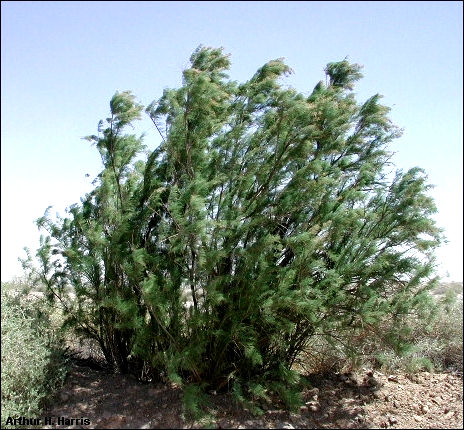

It's sometimes said that fish and guests begin to stink after 3 days. In the mid-19th century, tamarisk, also known as salt cedar, was brought into North America as a guest for its value as an ornamental tree, erosion control, and a windbreak. As is so common with introduced species, however, it has invaded numerous areas, wreaking environmental disaster.
With few natural enemies in North America, this weed has spread,
unchecked, in streamside habitats throughout the West and northern Mexico. Ousting
native trees like cottonwoods and willows, tamarisk degrades the biological environment
with its thick cover, under which little can grow, and lack of edible parts. It also
harms the physical environment, recklessly wasting huge amounts of water and rendering
the ground too mineral-laden for most trees. Its thick growth catches silt and debris,
narrowing stream channels and increasing flooding. With damages running into the
millions, this is a guest who truly has begun to stink.

Listen to the Audio (mp3 format) as recorded by KTEP, Public Radio for the Southwest.
Contributor: Arthur H. Harris, Laboratory for Environmental Biology, University of Texas at El Paso.
Desert Diary is a joint production of the Centennial Museum and KTEP National Public Radio at the University of Texas at El Paso.

Tamarisk growing next to an irrigation ditch, Socorro, TX. Vegetation on the left and behind is Four-winged Saltbush.